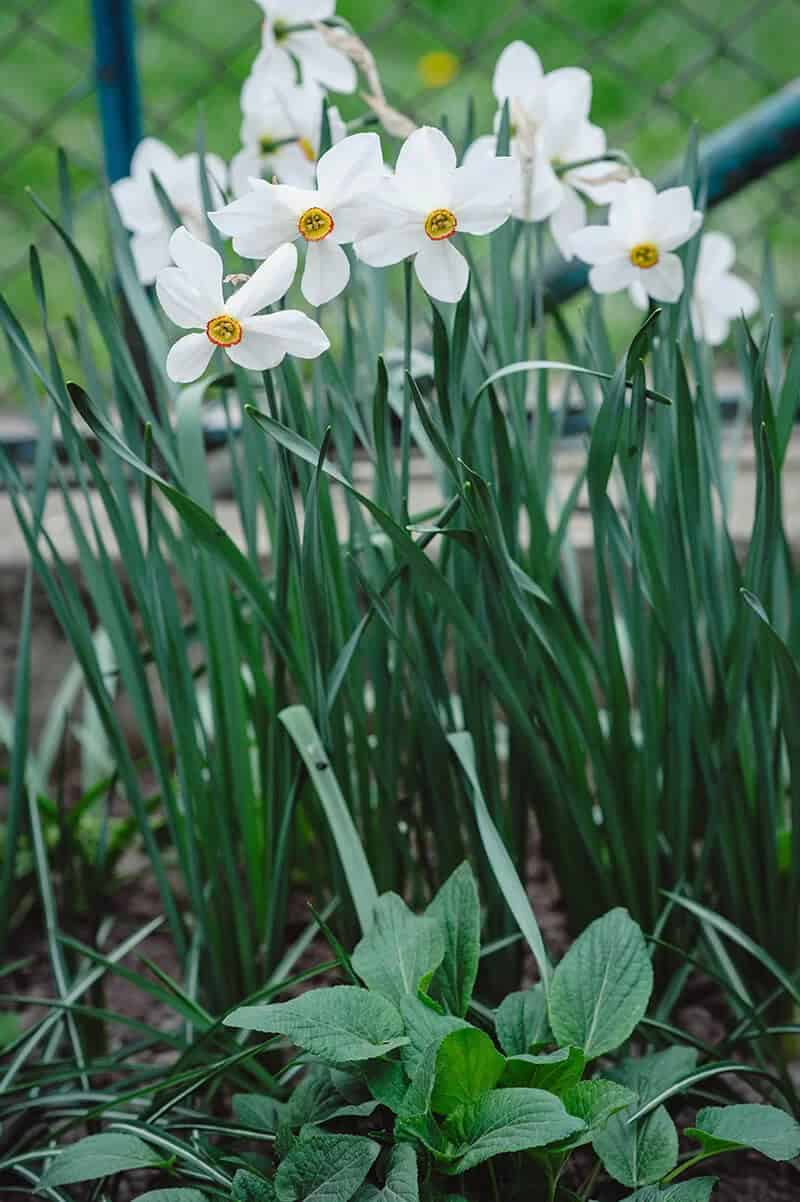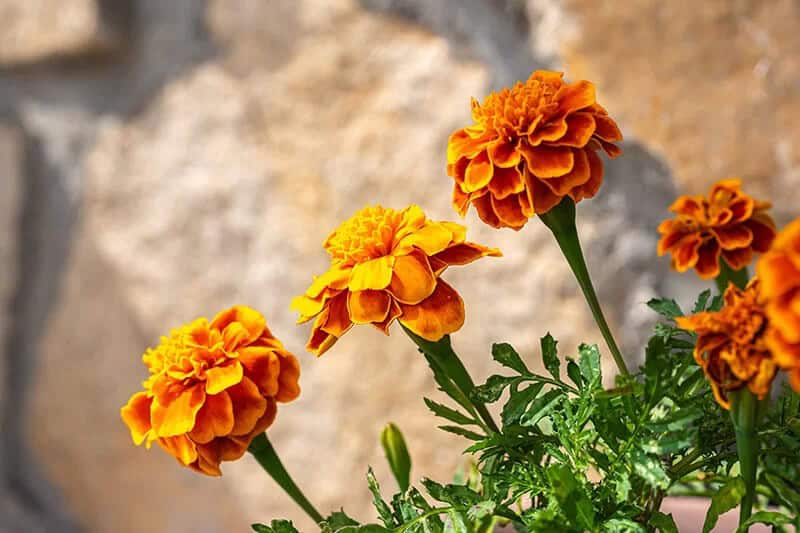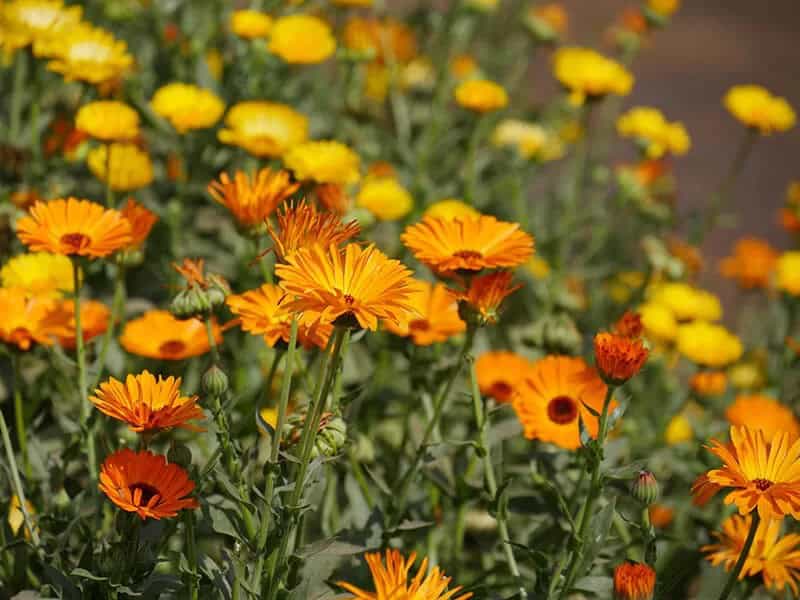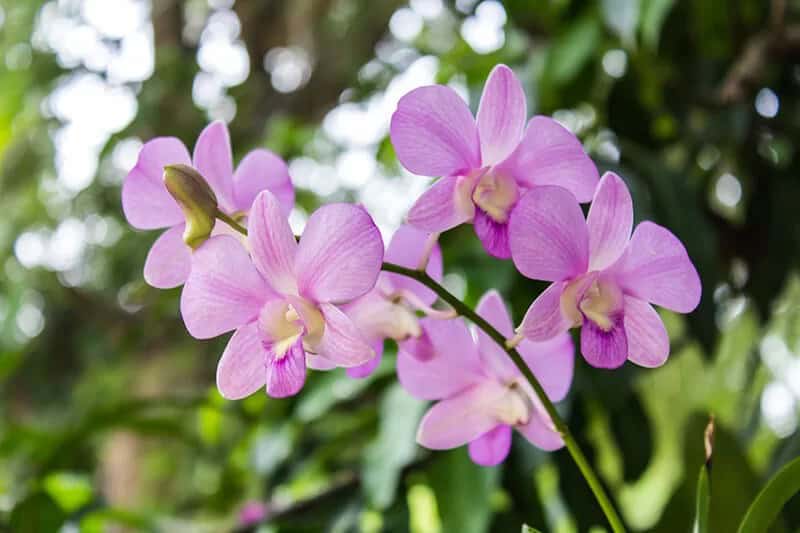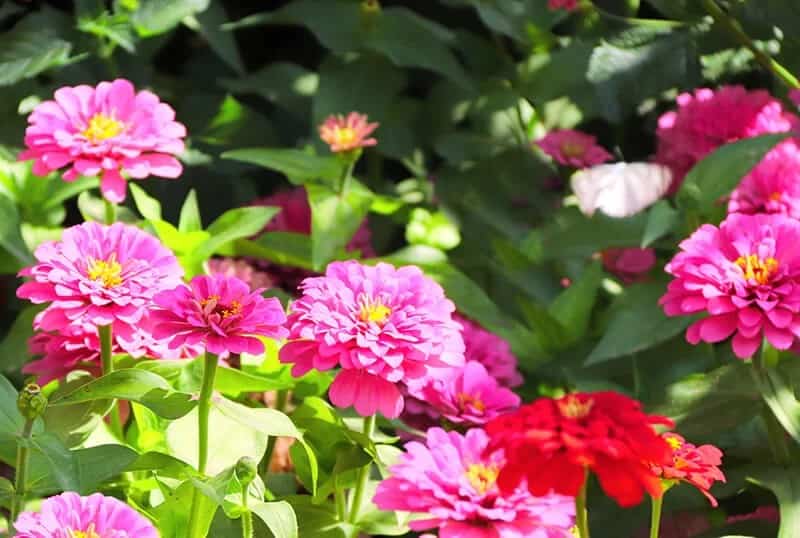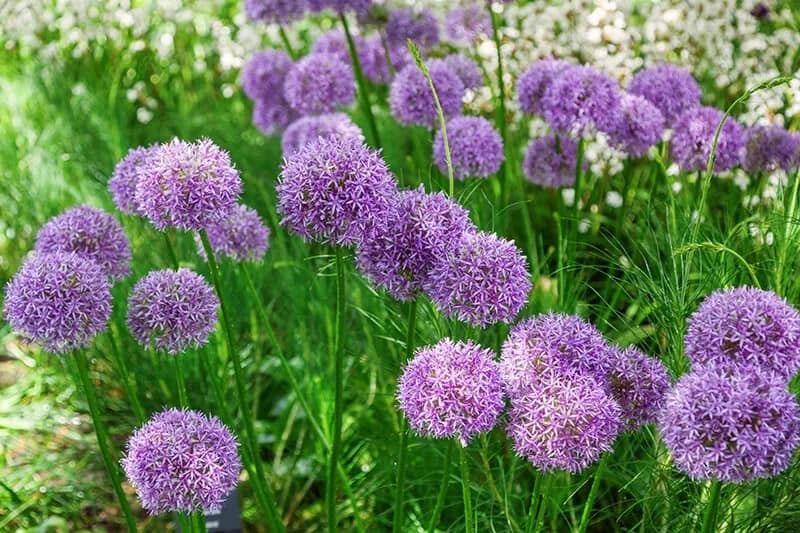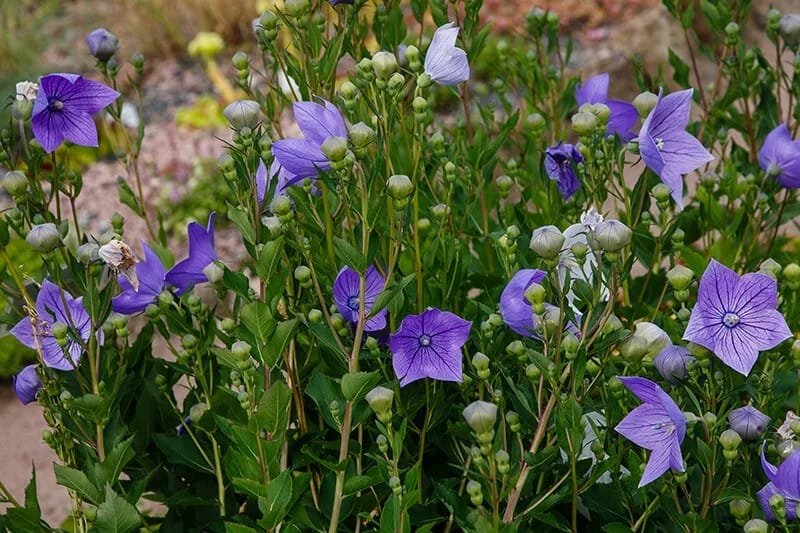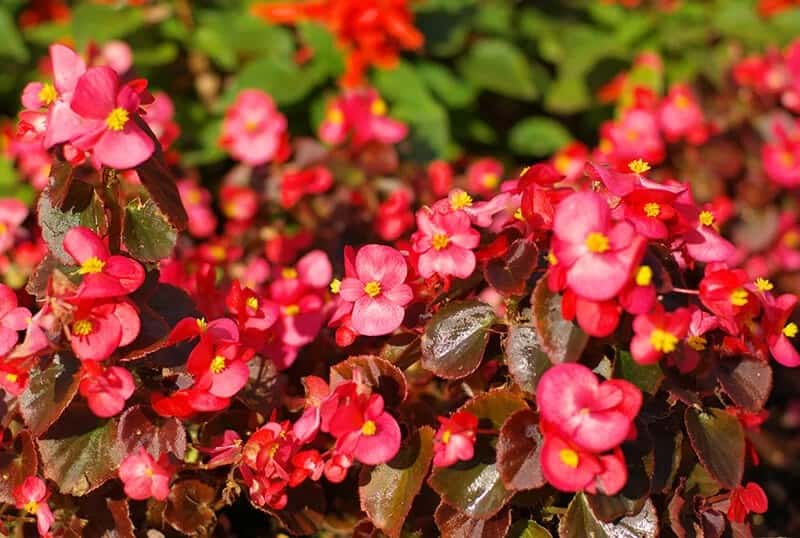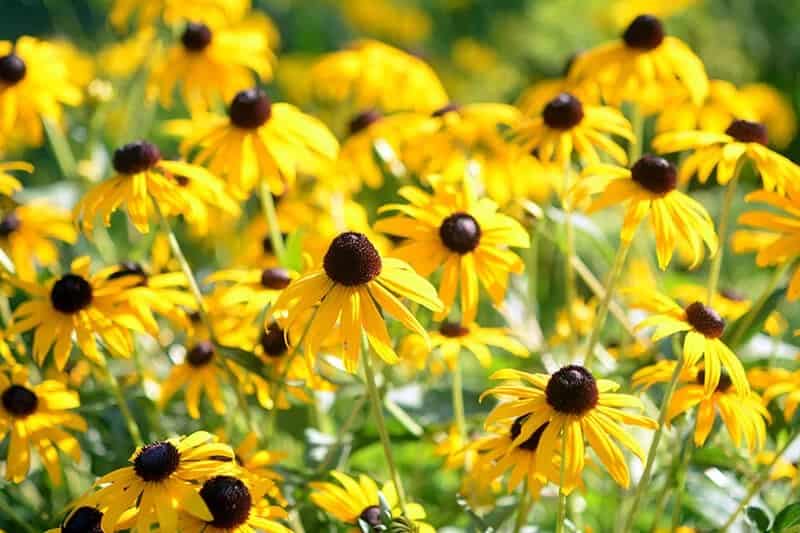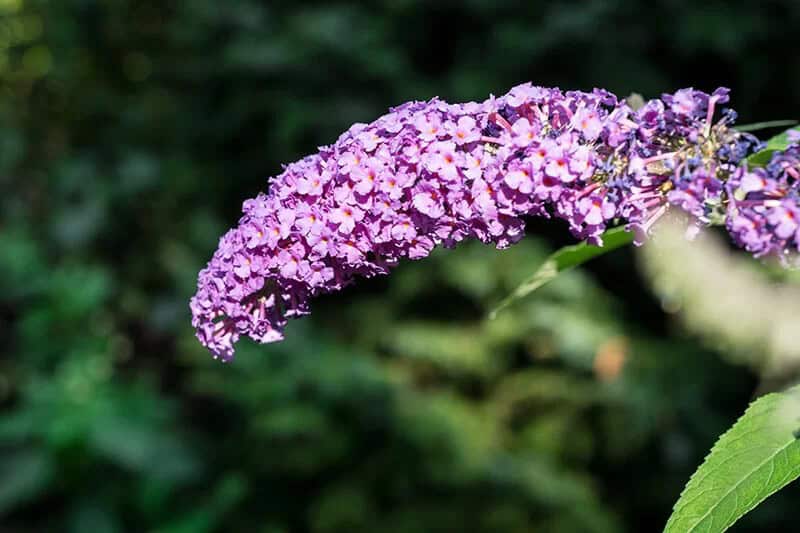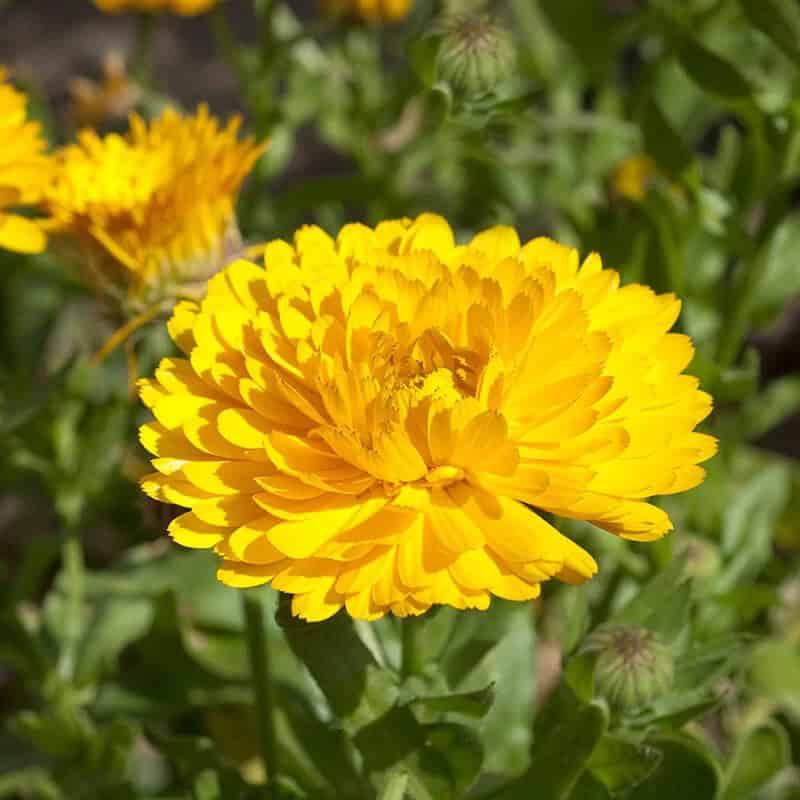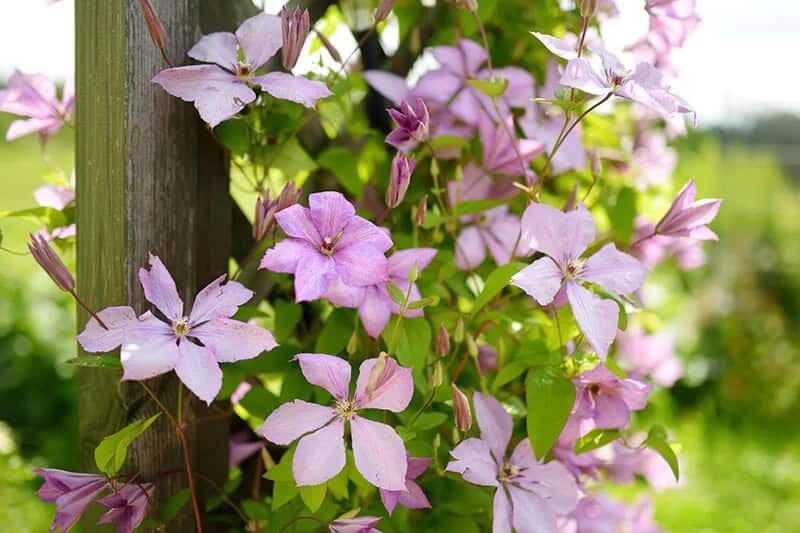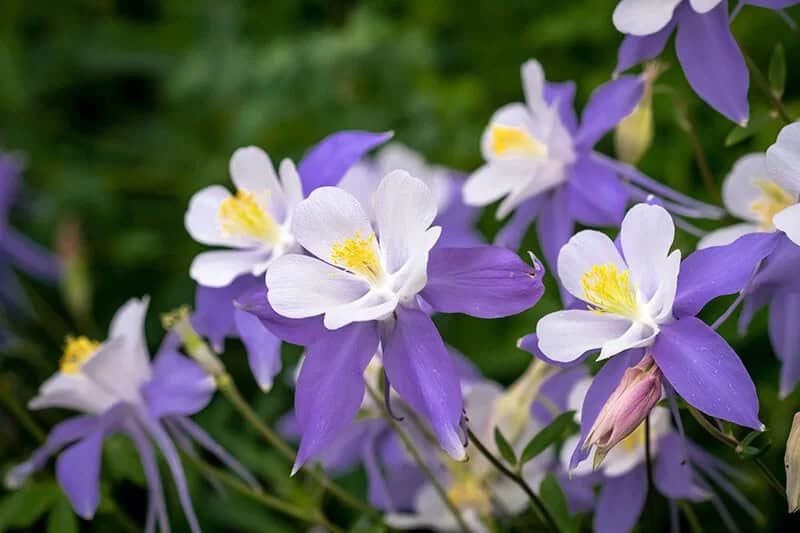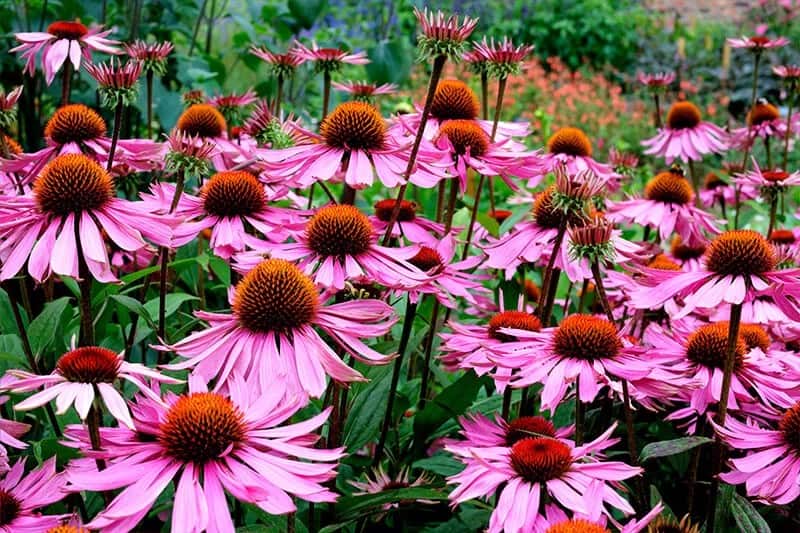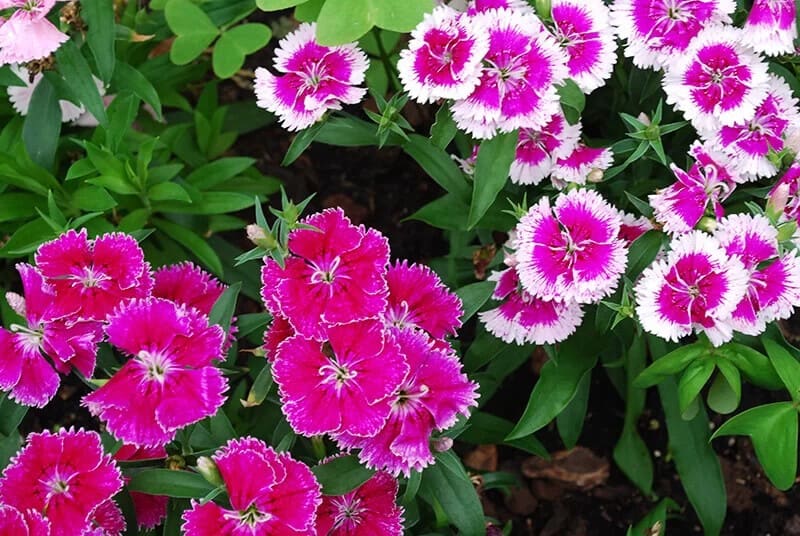When it comes to gardening, there’s no denying the joy that comes from incorporating your beloved flowers into your outdoor space. Not only do they bring a splash of vibrant color to the landscape, but they also infuse it with a sense of elegance and whimsy. In many ways, flowers are the crowning jewels of any garden, adding a level of beauty and vibrancy that’s hard to replicate.
27 Flowers that will Increase the Cuteness Factor in Your Garden
While flowering plants can be a delight to cultivate, their symbolic meanings and unique visual appeal make them truly special. If you’re looking to create a show-stopping garden, consider opting for unusual varieties that boast striking characteristics. Not only will these charming blooms bring life to your backyard or front yard, but they’ll also serve as a beautiful addition to your patio or porch decorations.
For an impressive display, incorporate some of the most noteworthy types of flowers into your garden design.
Aster (Asteraceae)
Asters are often overlooked yet incredibly easy to cultivate and maintain. With their delicate white, blue, red, pink, or purple flowers resembling daisies, they’re a charming addition to any garden. These flowering wonders thrive in loamy, well-drained soil and bask in the warm rays of full sun. In fact, asters are one of the most low-maintenance plants you can grow. They require frequent watering, but their reward is a long-lasting blooming period that spans from mid-summer to fall.
This makes them an ideal choice for attracting pollinators to your vegetable garden. Whether grown solo or paired with other flowers, asters are sure to bring a pop of color and whimsy to your outdoor space. With growing zones ranging from 3 to 8, this flower is accessible to gardeners across the country. The symbolism surrounding asters is also noteworthy – they’re often associated with love, daintiness, and wisdom. So why not give these lovely blooms a try?
Daffodils (Narcissus)
The symbolic significance of daffodils is deeply rooted in the concept of new beginnings and rebirth. They thrive in environments that mirror these qualities, requiring a high level of water intake. In addition, their roots need fertile, well-drained soil that is consistently moist to reach their full potential. As for growing zones, daffodils can be cultivated in areas with USDA hardiness ratings between 3 and 8. When it comes to light exposure, they require full sun to bloom abundantly.
Interestingly, their blooming season typically takes place during early spring. Clustering daffodils can create a charming visual display that’s sure to delight. To ensure optimal growth, it’s essential to begin with healthy bulbs, which will allow your plants to flourish from spring to fall.
Tulips (Tulipa)
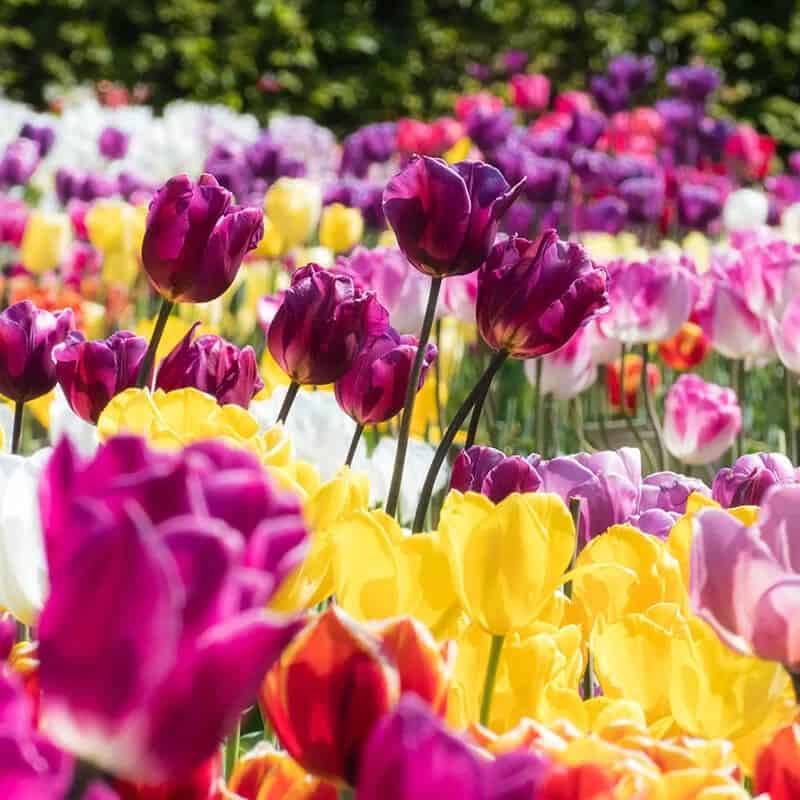
Tulips are a popular choice for gardeners due to their ease of growth and decorative value. They can be trained into intricate topiary shapes or used to create beautiful patterns in gardens. Beyond their aesthetic appeal, tulips are also low-maintenance and make excellent window sills or houseplants. With over 150 species, tulips come in a wide range of colors including vibrant reds, blues, purples, whites, yellows, and more.
They thrive in slightly acidic, well-draining soil with full sun exposure. In terms of care, they require very little water and can tolerate dry or sandy conditions. Tulips are hardy in zones 3 to 7, making them a great option for gardeners in temperate climates. In the spring, tulips burst into bloom, adding a splash of color to any garden or indoor space.
Peonies (Paeonia)
The majestic peony, with its symbolism of good fortune, prosperity, wealth, and honor, is a treasure to behold. Not only do they boast stunning beauty, but their fragrance is an added bonus. For optimal growth, peonies require well-drained soil that’s slightly acidic, 1 inch of water per week, and at least 8 hours of full sun exposure daily. They thrive in growing zones 3 to 8. As for blooming season, late spring through early summer is when these flowers truly come alive.
It’s recommended to plant them as spring approaches, allowing sufficient time for growth before the winter chill sets in. To get a head start, consider starting them indoors, ensuring you’re not left waiting for spring’s arrival.
Carnations (Dianthus caryophyllus)
Carnations are a type of flower that exudes symbolism of good fortune, love, and admiration for its beauty. They require specific conditions to thrive, including a consistent watering schedule – once or twice per week – and a well-draining, alkaline soil with high productivity. These flowers can be grown in zones 5 to 9 and need full sun exposure to reach their optimal blooming potential late in the spring.
Their distinctive thick stem and clump-like growth pattern sets them apart from other flowers. While they may shed their petals easily when exposed to cold temperatures, this is a temporary setback as new growth will eventually emerge. Carnations are not only beautiful additions to bouquets or table decorations but also make for lovely cut arrangements.
Transvaal Daisy (Gerbera Daisies)
Gerbera daisies, often considered the epitome of perfection in the world of plants, boast a unique combination of attributes that make them a joy to grow and admire. Symbolically speaking, these flowers embody the essence of joy, cheerfulness, and innocence, making them an excellent choice for brightening up any space. In terms of their care requirements, gerbera daisies are relatively easy-going.
They require about 1 inch of water per week, a soil that’s moist but well-drained, and thrive in zones with mild winters (8 to 11). When it comes to light, these flowers crave full sun, which means they’ll love basking in the warm glow of your windowsill or backyard. One of their most impressive features is their ability to bloom consistently throughout the early spring and fall seasons, providing a stunning display of colorful petals that will leave you mesmerized.
And if you’re looking for a low-maintenance flower that can survive for extended periods without much attention, gerbera daisies are an excellent choice.
Orchids (Orchidaceae)
The elegant orchid is a sought-after flower known for its unique characteristics and ability to thrive in warm tropical environments. One of its most striking features is its specialized leaf and stem structure, which allows it to maximize sunlight absorption. With a wide range of colors, shapes, and sizes to choose from, orchids are not only beautiful but also make excellent indoor plants when provided with the right conditions.
To replicate their natural habitat indoors, it’s essential to offer them bright, indirect light, as well as ensure they receive adequate water and soil nutrients. Specifically, these plants require watering once a week during winter and twice a week during warmer periods. Additionally, every year or so, they need fresh potting soil to thrive. With a growing zone of 6 to 9, orchids are best suited for mid-summer to fall blooming, when the air is warm and humid.
Zinnias (Zinnia Elegans)
Zinnias are vibrant flowers that exude symbolism of friendship, lasting affection, endurance, and goodness, making them a wonderful addition to any garden. With their diverse range of colors and shapes, these flowers offer unique uses and are surprisingly easy to grow and maintain. Requiring 1 inch of water per week, organic matter-rich soil with good drainage, and full sun, zinnias thrive in zones 3 to 10.
They also bloom from late spring until the first frost, attracting butterflies and hummingbirds to your garden. Whether you’re looking to add a pop of color or create a haven for pollinators, zinnias are an excellent choice.
Masterworts (Astrantia)
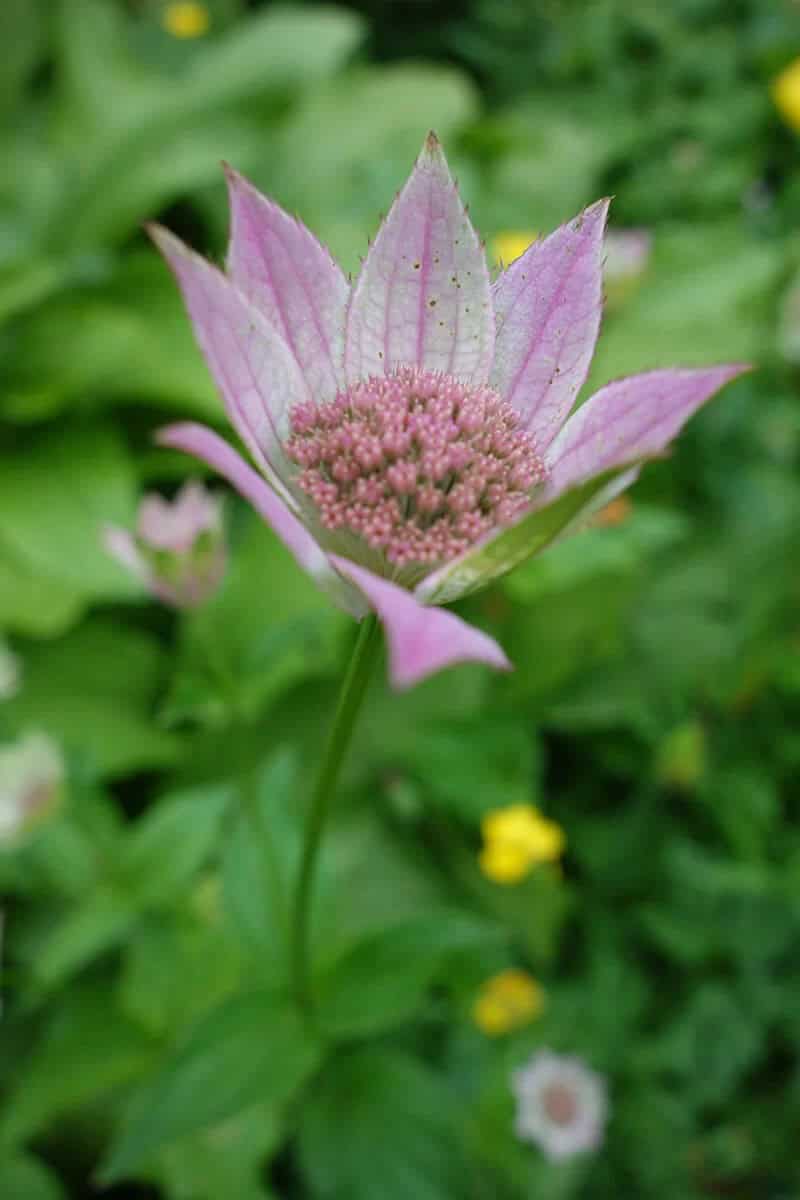
Astrantia, a popular cut flower, also boasts natural pest-deterrent properties that make it an effective alternative to toxic chemicals. This versatile plant requires careful attention, including regular watering to keep the soil moist, rich in organic materials, and partial shade. It thrives in growing zones 4-9 and produces blooms from late spring to mid-summer.
Standing between 2-4 feet tall and spreading out to about 3 feet wide, Astrantia major and minor are two of the most common varieties. With its symbolic associations with strength, protection, and courage, this plant is a valuable addition to any garden.
Allium (Allium)
Alliums are a great option for areas with dry soil as they’re more resilient to drought conditions than many other flowers. These stunning blooms come in shades of red, purple, and white, bearing a resemblance to lilies or tulips when they unfurl. Notably, allium plants can spread quickly if not properly contained, making it essential to consider their potential invasiveness before planting them in your garden.
As for the symbolism behind these beautiful flowers, they embody patience, good fortune, humility, and unity. In terms of growing requirements, alliums thrive in moist yet well-drained soil, requiring a watering schedule of once a week to keep the soil consistently moist. They’re also adapted to full sun exposure and can be grown in zones 5 to 9, with their blooming season typically occurring late spring to early summer.
Angelonia (Angelonia)
The symbolism of Angelonia is often tied to unrequited love or forgotten past loves, with its delicate blooms resembling tiny daisies. When it comes to its water needs, this flowering beauty thrives when the topsoil feels dry and receives watering 2-3 times a week. It’s also not too picky about its soil, requiring only rich, well-draining, and slightly acidic conditions. Angelonia is hardy in zones 8 to 10, making it a great choice for gardeners in these regions.
In terms of light, it needs direct sunlight for at least 6-8 hours each day, with the blooming season typically taking place from late spring until the first frost. These flowers are also drought-tolerant and attract hummingbirds, adding an extra layer of interest to your garden. The colorful leaves that Angelonia produces add texture and visual appeal to your outdoor space, making it a great option for containers or hanging baskets on a patio or deck.
Azalea (Rhododendron)
The iconic azalea is a flowering shrub that exudes elegance with its unique shape and vibrant blooms. Characterized by large, round leaves and flowers that span around three inches in diameter, this plant is renowned for its stunning displays of color. Azaleas come in a diverse range of hues, making them an extremely popular choice for homeowners seeking to add visual appeal to their outdoor spaces.
The showy blooms can persist anywhere from several weeks to several months, dependent on the level of care and environmental conditions. Notably, azaleas require moderate maintenance, including watering every 10-14 days during dry periods (approximately 3/4 to 1 inch of water). They also thrive in moist, slightly acidic soil rich in organic matter, with a growing zone ranging from 6 to 10.
Ideally, they prefer full sun or partial shade, and their blooming season typically spans late March to mid-May.
Balloon Flower (Platycodon Grandiflorus)
The Balloon Flower’s striking appearance is not just limited to its vibrant pink color and bell-shaped blooms. Its symbolic significance is also noteworthy, representing obedience, endless love, and honesty. When it comes to growing this beauty, you’ll want to provide the right conditions. Start by keeping the soil consistently moist but not waterlogged, as it thrives in organically rich, well-draining loamy soil.
The Balloon Flower prefers full sun and can grow up to three feet tall, making it an excellent addition to your garden beds or hanging over walls. Its large stature also makes it a great choice for the back of your flowerbeds. In terms of hardiness, this flower is suitable for growing zones 3 to 8. As for blooming season, you can expect the Balloon Flower to put on its showy display in the summer.
Begonia (Begonia)
Begonias are often admired for their remarkable characteristics, including harmonious communication and connection symbolized by the plant’s unique appearance. The beauty of begonias lies not only in their vibrant blooms, which come in a range of colors such as red, pink, white, purple, and yellow, but also in their distinctive leaves that emit a refreshing minty aroma when touched. This dual appeal makes begonias a popular choice for both distant admiration and up-close appreciation.
When it comes to cultivating these plants, they thrive in well-drained soil with loamy texture, requiring part shade or filtered sunlight. Begonias can be grown in zones 2 to 10, with the blooming season typically occurring from summer until frost.
Black-eyed Susan (Rudbeckia Hirta)
The black-eyed Susan is a fantastic option for new gardens or gardeners looking to add some vibrant blooms. One of its greatest advantages is its ability to quickly spread through self-seeding once established, allowing it to fill an area with ease. As with many wildflowers, the black-eyed Susan will produce additional seeds, providing the opportunity to watch them grow and flourish in subsequent years.
With its rich symbolism representing encouragement, justice, and motivation, this plant is sure to bring a sense of accomplishment and joy to any garden. To keep it thriving, be sure to water thoroughly when the top inch of soil around the plants feels dry, and provide it with rich, well-draining fertile soil. The black-eyed Susan also requires full sun and grows best in zones 3 to 10, blooming from June to September.
Butterfly Bush (Buddleja)
The butterfly bush is a perennial shrub that boasts stunning blooms, attracting the likes of butterflies and hummingbirds. Standing at a height of 3-6 feet, this striking plant thrives in well-drained fertile soil, with full sun being its ideal condition. Not only does it require adequate sunlight but also 1 inch of water per week to maintain its vibrancy.
With a growing zone range of 5 to 10, the butterfly bush is an excellent choice for those looking to add a pop of color to their garden during early to mid-summer. Furthermore, its symbolism is deeply rooted in themes of rebirth, new beginnings, and resurrection, making it a meaningful addition to any outdoor space.
Caladium (Caladium)
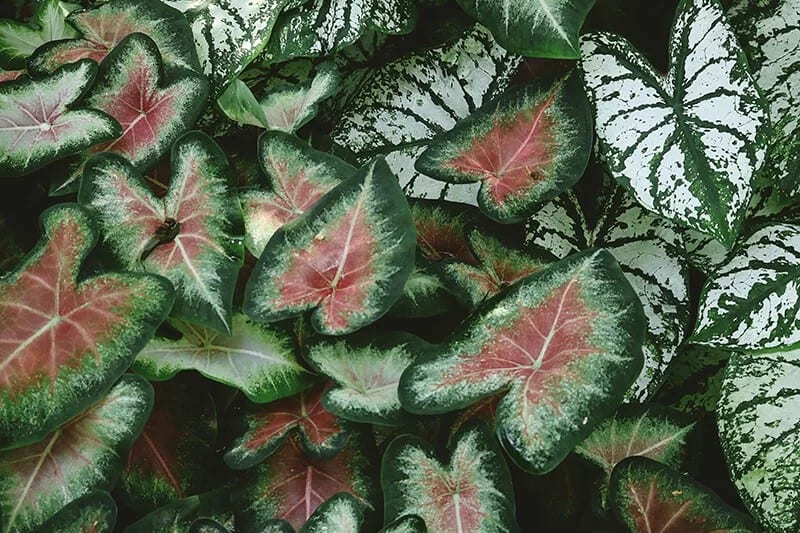
Surrounded by the vibrant hues of pexels. com’s photography, courtesy of Madison Inouye, lies a treasure trove of horticultural delight. Caladiums, a staple in many tropical gardens, boast a symbolic connection to joyfulness and an air of exuberance. To thrive, these stunning plants require regular watering, especially during dry spells when the soil demands attention to its well-drained, fertile nature.
With growing zones ranging from 9 to 11, Caladiums flourish under partial shade to full sunlight. Spring to fall is the optimal blooming season for these foliage-focused beauties, which come in a kaleidoscope of colors including pink and white hues. While susceptible to pests like aphids, regular inspections will keep unwanted visitors at bay. As an added bonus, these eye-catching plants bring a touch of exotic flair to any garden or indoor space.
Calendula (Calendula Officinalis)
With its vibrant colors and compact growth habit, this lovely flower is a great addition to any garden. But before you get started, it’s important to understand the symbolism behind these blooms. For many cultures, they represent a farewell, as well as feelings of bliss, gratitude, and pleasure. And let’s not forget their association with success – a perfect motif for a thriving garden! When it comes to growing conditions, these flowers are relatively low-maintenance. They require about 1-1.
5 inches of water per week, so make sure your soil is well-drained and rich in organic material. A USDA hardiness zone between 9 and 11 provides the ideal environment for growth. As for light, they do best in full sun or partial shade, and will bloom from spring to fall (and sometimes beyond). With colors ranging from pure white to bright orange, there’s a variety of options to suit your garden style.
And at just a few inches tall, they’re perfect for creating borders around other plants, or even adding some color to pots and near house entrances.
Calibrachoa (Calibrachoa)
Calibrachoa, with its vibrant hues and low-maintenance requirements, has earned its place as an excellent flowering plant for any garden. This versatile bloom thrives in well-hydrated soil that’s not waterlogged, with rich moisture and good drainage. When it comes to growing zones, calibrachoa prefers the warmth of regions 9 to 11, basking in full sun. As a bonus, it can tolerate wet soil and low-light conditions, making it an ideal houseplant option.
Whether you’re looking for a pop of color or simply want a plant that’s easy to care for, calibrachoa is a great choice. Its bright colors have even inspired designers to create unique and playful flower arrangements.
Catmint (Nepeta)
The enchanting Catmint, also known by its scientific names Nepeta faassenii and Nepeta mussinii, is a low-maintenance perennial that exudes love, fertility, and happiness. Its symbolism is deeply rooted in these qualities, making it an ideal addition to any garden. With its lavender-blue flowers, which are often used in tea blends, this beauty attracts a variety of pollinators, including butterflies, bees, and hummingbirds.
To thrive, Catmint requires one inch of water per week, well-drained soil with a slightly acidic pH, and can grow in zones 4 to 8. It’s tolerant of drought and can handle partial shade, making it perfect for busy gardeners who may not have time to tend to their plants daily.
Chrysanthemums (Chrysanthemum)
Surrounded by the symbolism of longevity, optimism, and loyalty, Chrysanths are a stunning addition to any garden. To keep them thriving, provide 6-8 inches of consistent moisture, as they prefer well-draining soil that retains some moisture. These flowers are versatile, tolerating temperatures from 5 to 9 growing zones, and basking in full sun to partial shade.
As the seasons change, Chrysanths burst into bloom during fall, late summer, and early winter, offering a kaleidoscope of colors from pure white to vibrant red and orange hues. With proper care, they’re easy to grow as annuals or perennials – simply remove spent blooms to encourage new growth. Whether you’re seeking a fleeting splash of color or a longer-lasting display, Chrysanths are an excellent choice.
Leather Flower (Clematis)
The clematis vine is a stunning addition to any garden, offering versatility in its growth habits. It effortlessly climbs up trellises or pergolas, while also thriving as a freestanding border. This flowering beauty excels in shady areas, bringing vibrant colors and charm to entryways, or can be used to create a striking focal point in full sun.
With an array of colors ranging from pure white to rich purple and pink hues, homeowners can easily find a clematis that harmoniously complements their home’s aesthetic. To cultivate this beauty, ensure it receives 1 inch of water regularly, and provide soil that is consistently moist, well-drained, and pH neutral to slightly alkaline. The ideal growing zones for clematis are between 4 to 9, while full sun provides the necessary light for optimal growth.
Blooming season typically occurs during early summer to early fall, making it an excellent choice for gardeners seeking year-round interest.
Columbine (Aquilegia)
The Columbine, a stunning shrub that reaches up to 3 feet in height, is characterized by its vibrant purple-pink and white flowers. This perennial boasts remarkable symbolism, embodying intelligence, wisdom, endurance, and tenacity. To thrive, Columbines require moderate soil moisture, tolerating sandy, loamy, or moist but well-drained conditions. They are ideal for zones 3 to 8, where they can bask in full sun.
As the mid-spring to early summer blooming season arrives, Columbines will cascade with color, perfect for adding a pop of vibrancy to your garden or landscape design. When planted correctly, these shrubs will continue to flower throughout the summer months, making them an excellent choice for borders along walkways and driveways.
Coneflower (Echinacea)
The symbolic meaning behind these flowers is rooted in their association with healing and strength. They thrive in conditions that are relatively easy to replicate, requiring only 1 inch of water per week, well-drained soil with a neutral to acidic pH, and full sun to grow optimally. The ideal growing zones for these flowers are 5 through 8. Early summer is when they typically bloom, showcasing their vibrant colors to the world.
Their beauty is not limited to a single hue – they come in an array of colors including white, pink, purple, and red. Some varieties even display a multi-colored flower head, adding an extra layer of visual interest. When fully grown, these flowers can reach heights of 3-4 feet, but will remain smaller if grown in partial shade or indoors.
Their appeal lies not only in their aesthetic value, but also in their ability to attract butterflies and hummingbirds with their colorful presence.
As such, they make excellent additions to any garden or indoor container garden.
Crocus (Crocus)
Crocuses are a vibrant addition to any garden or yard during the early spring months. This hardy flower is capable of blooming up to four weeks earlier than other plants, making it an excellent choice for preparing your garden for the new season and adding a pop of color throughout your outdoor space. With three distinct colors available – yellow, white, and purple – crocuses offer a versatile option for creating stunning displays of flowers.
One of the most attractive features of crocuses is their ability to thrive in well-drained, slightly acidic soil with full sun or partial shade. This means that they can be grown in a variety of environments, from sunny spots to shadier areas. Additionally, these flowers require no supplemental water, making them a low-maintenance option for busy gardeners.
As the seasons transition into late winter and early spring, crocuses begin to bloom, painting your yard with vibrant hues.
Whether you’re looking to add a splash of color to your outdoor space or simply want to enjoy their beauty, crocuses are an excellent choice.
Pink (Dianthus)
The sweet-scented blooms of these flowers are deeply rooted in symbolism, evoking feelings of love, gratitude, and admiration. To nurture this beauty, you’ll need to provide it with some basic care. Start by giving it a drink once a week – water is essential! For optimal growth, choose a location with full sun and well-drained soil that’s slightly neutral in pH. The plant thrives in zones 3 to 8, making it accessible for many gardeners.
As the seasons change, expect the flowers to bloom from spring to early summer, painting your landscape with vibrant hues of red, pink, orange, and white. What sets this flower apart is its low-maintenance nature – it can survive in most weather conditions and even thrives in small spaces. This hardiness makes it a popular choice for those new to gardening or looking for an easy-to-grow addition to their outdoor oasis.
Daylily (Hemerocallis)
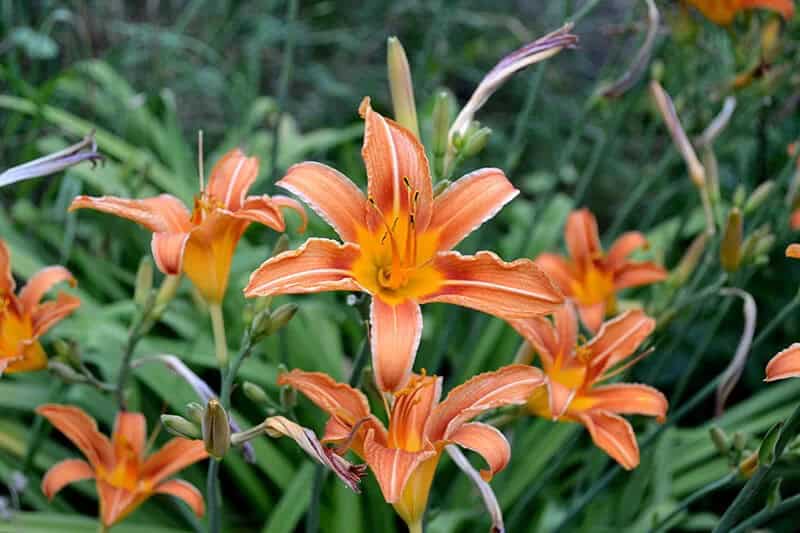
The daylily is a perennial that boasts stunning flowers with symbolic meanings behind them – success, wealth, and desire. When it comes to nurturing these blooms, they require specific conditions. For starters, they need an inch of water per week to thrive. Additionally, the soil should be rich and well-drained, allowing for good aeration. As for growing zones, daylilies are perfect for zones 4 to 9.
They can tolerate both full sun and partial shade, making them a versatile addition to any garden. In terms of blooming season, daylilies typically flower in early spring until the first frost. One of the best aspects of these perennials is their durability – they’re known to last a while in your garden. With such large blooms, you can expect a kaleidoscope of colors, ranging from vibrant reds and yellows to softer oranges and whites.
27 Cute Flowers for a Happy and Uplifting Garden
Having a garden with adorable flower pictures can bring numerous benefits. To reap these rewards, it’s essential to select the right type of flowers that cater to your specific needs and preferences. When choosing flowers for your outdoor space, consider the emotional impact they will have on those around you. With proper care and attention, all plants can thrive, but some require more nurturing than others.
If you’re looking for a bigger statement piece, don’t forget to explore our selection of evergreen trees as well.

